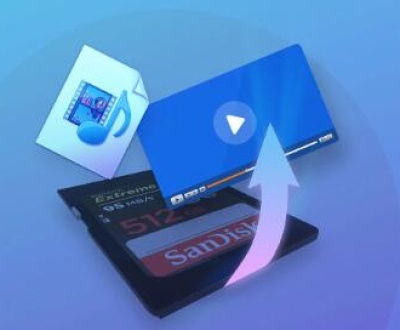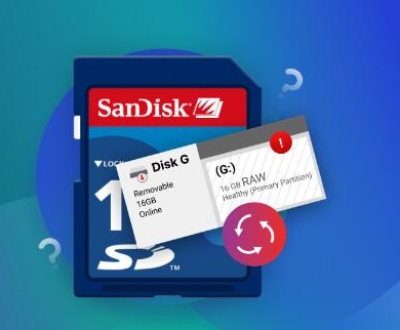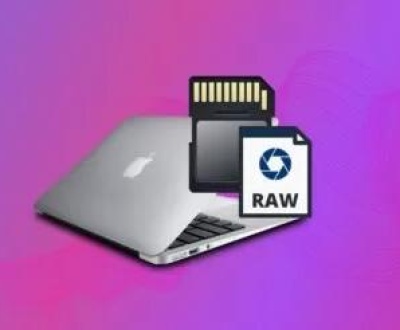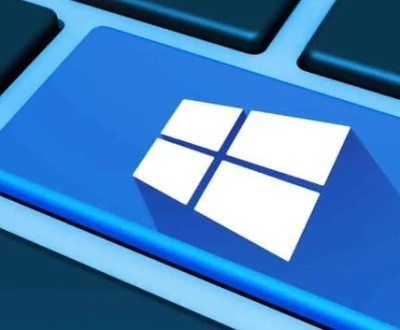Recovering data from a Seagate external hard drive can be an important process, especially if the drive has become corrupted, damaged, or if files have been accidentally deleted. Seagate external hard drives are known for their reliability, but like any storage device, they can experience issues that may jeopardize the safety of the data stored on them. Whether it’s a case of accidental deletion, file system corruption, physical damage, or other reasons, knowing how to recover your data effectively can save time, effort, and prevent loss of important files.
1. Common Issues with Seagate External Hard Drives
Before diving into the recovery process, it’s important to identify the most common problems that might cause data loss on a Seagate external hard drive. This awareness helps users better understand the nature of the issue and how to approach recovery.
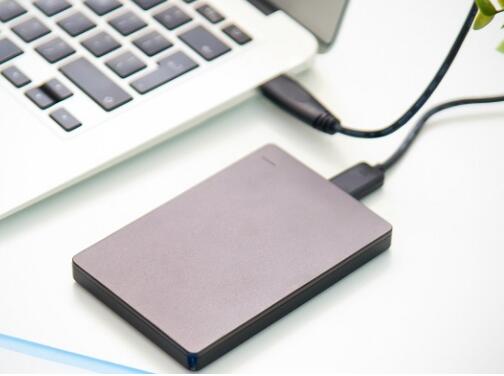
1.1. Accidental File Deletion
One of the most common reasons for data loss on an external hard drive is the accidental deletion of files or folders. This can happen in many ways, such as mistakenly pressing the delete button, deleting files while cleaning up the drive, or formatting the drive without realizing that important files are stored on it.
1.2. File System Corruption
Corruption of the file system can occur due to various reasons, such as improper ejection of the external hard drive, power failure, or virus infections. File system corruption can make the data inaccessible or cause the drive to be unrecognized by the computer.
1.3. Physical Damage
External hard drives, including Seagate models, are susceptible to physical damage. This can occur due to drops, shocks, or water exposure. Physical damage may result in mechanical failure, causing the drive to stop working altogether. In such cases, recovery may require professional intervention.
1.4. Bad Sectors
Bad sectors are areas on the hard drive that become damaged and cannot reliably store data. Over time, hard drives accumulate bad sectors due to wear and tear. If the bad sectors affect critical parts of the drive, data loss can occur.
1.5. Partition Loss
Partition loss can occur when the partition table is deleted, damaged, or corrupted. Without a valid partition, the data becomes inaccessible. This problem is often caused by formatting the drive or modifying the partition structure without a backup.
2. Pre-Recovery Steps: What You Should Do Before Attempting Data Recovery
Before attempting any recovery, it’s essential to follow a few precautionary steps to maximize the chances of successful data restoration.
2.1. Do Not Write New Data to the Drive
One of the first things you should do if you realize that files are missing or the drive is malfunctioning is to stop using the drive immediately. Writing new data to the drive can overwrite the lost files, making them unrecoverable. Avoid saving anything to the Seagate external hard drive until the recovery process is complete.
2.2. Check the Cable and Ports
Ensure that the issue is not caused by a faulty cable or USB port. Try connecting the Seagate external hard drive to a different USB port or using a different cable to rule out connection problems. You can also try connecting the drive to another computer to see if it works.
2.3. Backup Available Data
If your Seagate external hard drive is still functioning but showing signs of failure, it’s crucial to back up any available data immediately. If the drive is partially readable, it’s better to copy your files elsewhere to avoid losing them during the recovery process.
3. Methods for Recovering Data from Seagate External Hard Drives
There are several methods for recovering data from a Seagate external hard drive. These methods range from DIY solutions to professional recovery services, depending on the extent of the damage or corruption.
3.1. Recovering Deleted Files Using Software
In cases where files have been accidentally deleted, data recovery software can often help retrieve them. Several reliable data recovery tools are available to help recover deleted files from a Seagate external hard drive.
3.1.1. Panda Assistant
Panda Assistant is a versatile data recovery software designed to help users retrieve lost or deleted files from various storage devices, including hard drives, USB drives, and memory cards. Known for its user-friendly interface, Panda Assistant offers an efficient and intuitive way to recover documents, photos, videos, and other types of files that may have been accidentally deleted, lost due to system crashes, or corrupted. It works by scanning the storage device for remnants of deleted data, allowing users to preview and restore the files before committing to a recovery process.
Panda Assistant supports a wide range of file systems, including NTFS, FAT, exFAT, and more, making it compatible with both Windows and Mac operating systems. Its powerful scanning algorithms enable the recovery of lost data even from formatted drives, and it also provides options for deep scans to maximize recovery chances.
With features like file preview, recovery pause/resume, and the ability to recover multiple file types, Panda Assistant caters to both novice and advanced users. It’s a reliable tool for anyone facing data loss, offering an affordable solution with a high recovery success rate.
3.1.2. TestDisk
TestDisk is a powerful open-source recovery tool that can help recover lost partitions, repair file systems, and restore deleted files. This tool is especially useful in cases of file system corruption or partition loss. However, TestDisk requires more technical knowledge to use effectively.
To use TestDisk:
Download and install the software on your computer.
Open TestDisk and select your Seagate external hard drive from the list of available drives.
Select the partition recovery option, and let TestDisk analyze the drive for lost partitions or file system issues.
Follow the on-screen prompts to restore partitions or recover files.
3.1.3. Recuva
Recuva is another popular recovery tool that is easy to use and can recover various file types from a Seagate external hard drive. It’s best used for recovering accidentally deleted files but may also work for other types of data loss.
Download and install Recuva on your computer.
Connect your Seagate external hard drive to the computer.
Launch Recuva and select the type of files you wish to recover.
Choose the Seagate drive as the location to scan.
Let Recuva scan for recoverable files, then preview and select the ones you want to restore.
3.2. Recovering Files from a Corrupted Drive
If the file system is corrupted, recovery software like the ones mentioned above may still help in many cases. However, if the corruption is severe, more advanced techniques may be required.
3.2.1. Using CHKDSK (Windows)
In some instances, Windows’ built-in CHKDSK tool can repair minor file system errors on external hard drives. While CHKDSK cannot recover deleted files, it may help in cases of minor corruption.
To run CHKDSK:
Open the Command Prompt as Administrator.
Type chkdsk X: /f (replace X with the letter of your Seagate external hard drive).
Press Enter and let CHKDSK attempt to fix the file system.
3.3. Professional Data Recovery Services
If the above methods do not work or if your Seagate external hard drive has suffered physical damage, it may be necessary to use professional data recovery services. These services often involve sending the drive to a specialized lab where experts can attempt to recover the data using advanced tools and techniques.
Some well-known data recovery services include:
DriveSavers: Known for its expertise in recovering data from physically damaged drives.
Seagate Data Recovery Services: Offered by Seagate itself, this service specializes in recovering data from Seagate drives.
Ontrack: Offers a wide range of recovery services for both individual users and businesses.
Professional services are typically expensive, but they have the best chance of recovering data from drives that are physically damaged or severely corrupted.
4. Preventive Measures to Avoid Data Loss on Seagate External Hard Drives
While data recovery methods are effective, prevention is always better than cure. Here are some tips to protect your data in the future:
Regular Backups: Ensure that you back up your files regularly. Use cloud services or an additional external drive to create copies of your important files.
Safely Eject the Drive: Always eject your Seagate external hard drive properly to avoid file system corruption.
Use Antivirus Software: Keep your computer and external hard drives free of malware by using reliable antivirus software.
Handle with Care: Avoid dropping or exposing your Seagate drive to moisture. If the drive is portable, use a protective case to prevent physical damage.
Data recovery from a Seagate external hard drive can be a straightforward or complex process depending on the nature of the problem. Whether you’re dealing with accidental file deletion, file system corruption, or physical damage, the steps outlined in this guide should provide a clear path to attempt recovery. Always prioritize backing up your data and handling your drive with care to prevent future issues. If DIY methods fail, professional data recovery services can offer a last resort, ensuring your valuable files are not lost forever.
About us and this blog
Panda Assistant is built on the latest data recovery algorithms, ensuring that no file is too damaged, too lost, or too corrupted to be recovered.
Request a free quote
We believe that data recovery shouldn’t be a daunting task. That’s why we’ve designed Panda Assistant to be as easy to use as it is powerful. With a few clicks, you can initiate a scan, preview recoverable files, and restore your data all within a matter of minutes.
Subscribe to our newsletter!
More from our blog
See all postsRecent Posts
- Retrieve deleted videos from sd card 2025-04-25
- How to retrieve damaged sd card? 2025-04-25
- Retrieve photos from sd card 2025-04-25

 Try lt Free
Try lt Free Recovery success rate of up to
Recovery success rate of up to

